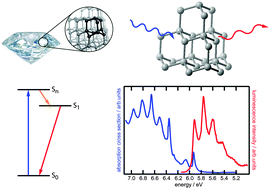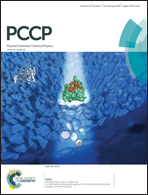Size and shape dependent photoluminescence and excited state decay rates of diamondoids
Abstract
We present photoluminescence spectra and excited state decay rates of a series of diamondoids, which represent molecular structural analogues to hydrogen-passivated bulk diamond. Specific isomers of the five smallest diamondoids (adamantane–pentamantane) have been brought into the gas phase and irradiated with synchrotron radiation. All investigated compounds show intrinsic photoluminescence in the ultraviolet spectral region. The emission spectra exhibit pronounced vibrational fine structure which is analyzed using quantum chemical calculations. We show that the geometrical relaxation of the first excited state of adamantane, exhibiting Rydberg character, leads to the loss of Td symmetry. The luminescence of adamantane is attributed to a transition from the delocalized first excited state into different vibrational modes of the electronic ground state. Similar geometrical changes of the excited state structure have also been identified in the other investigated diamondoids. The excited state decay rates show a clear dependence on the size of the diamondoid, but are independent of the particle geometry, further indicating a loss of particle symmetry upon electronic excitation.


 Please wait while we load your content...
Please wait while we load your content...